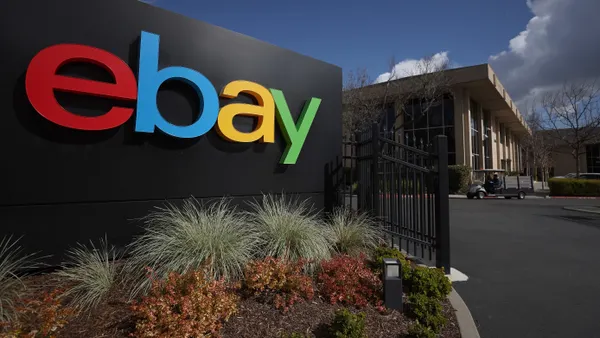Robert Hetu is a research vice president with the Gartner retail industry services team. His responsibilities involve tracking the technology markets and trends impacting the broad-based retail merchandising and planning areas. Views are the author's own.
The retail industry is transforming through a period of unprecedented change. Emerging technologies continue to drive digital disruption, and customer experience is fast becoming the new currency.
Artificial intelligence (AI) and automation technologies have vastly altered every stage of the retail journey, from inventory management to customer service. Retailers are also integrating data analytics into every touchpoint of their business, including sales predictions, store optimization and product recommendations. As consumers grow accustomed to the impact of these emerging technologies on their buying experience, their expectations are becoming higher than ever.
The ability of retailers to effectively use AI, data analytics and other emerging technologies to meet changing customer expectations will be a key determinant of success in the new decade. These technologies will also dramatically impact operational activities, such as workforce management, inventory and sustainability efforts.
Here are Gartner's predictions for how technology will impact the future of retail in 2020 and beyond.
1. By 2025, at least two of the top 10 global retailers will establish robot resource organizations to manage nonhuman workers.
Over the past year, several large retailers including Walmart, Target, Walgreens and Stop & Shop have announced the use of smart robots for tasks such as inventory checking, store cleaning, and product assistance and delivery. By 2021, 77% of retailers plan to deploy AI, with robotics for warehouse picking as the top use case.
The growth of robots will have tremendous implications on the future of work. Retailers' ability to assist, replace or redeploy their human workers in more value-adding activities will be critical. This will require a combined effort from HR, IT and a line of business managers to ensure productive applications for all types of employees and positive partnerships between robots and the human workforce.
2. By 2024, Tier 1 retailers in North America and Europe will reduce inventory carrying costs by 30%, dramatically improving free cash flow for digital investment, while revamping balance sheets.
Major sources of funds are needed to invest in digitalization. Therefore, retailers cannot drive growth only from cost optimization strategies. With dead inventory estimated to cost the U.S. retail industry as much as $50 billion a year, reducing inventory carrying costs is an effective way to improve productivity and generate free cash flow.
Retailers will leverage AI to drive more-accurate demand forecasting, create tailored market assortments and forward-deploy inventory to localized fulfillment centers to maintain inventory flexibility. At the same time, Internet of Things (IoT) technologies deployed in stores, including RFID, computer vision, smart shelves and electronic shelf labels (ESLs), will improve on-shelf availability. When AI solutions are combined with these in-store execution strategies, the overall improvement in accuracy will support a dramatic reduction in required safety stock.
3. By 2025, at least two of the top 10 global retailers will create a sharing economy service for store-level associates to address workforce challenges.
Retail stores must now support a wide array of services to meet customer expectations. For example, several large retailers now fulfill around half of online orders in stores. The expanded duties of picking, packing and providing orders places additional pressure on an already overextended store workforce.
Simultaneously, today's rising generation of employees expects more from work, including greater flexibility and increased growth opportunities. As advancements in technology enable new ways of working, retailers must keep pace to attract and retain quality talent.
Allowing for flexibility to work across retailer locations or within umbrella brands is one way to leverage workers more effectively and provide increased earning opportunity. In coming years, retailers will need to identify how roles in the store are changing and how they could be supplemented by labor sharing or contingent work.
4. By 2025, at least four of the top 10 global nonfood retailers will establish a recommerce program as part of their global targets for zero carbon and sustainability.
While millennials and Gen Z are known for their propensity for sustainable practices, all generations are now a priority on sustainable consumption. According to Nielsen, 73% of consumers would change a behavior to reduce their impact on the planet.
"Recommerce," or reverse commerce, is the selling of previously owned products. It is quickly growing in popularity. The secondhand apparel global market value reached $24 billion in 2018, with projections to achieve $51 billion by 2023.
As consumers become more deliberate in rewarding retailers with sustainability initiatives that align with their own, recommerce programs will attract new customers and increase brand loyalty.
5. By 2025, the top 10 retailers globally will leverage AI to facilitate prescriptive product recommendations, transactions and forward deployment of inventory for immediate delivery to consumers.
Expanding digital footprints are mapping a path to unprecedented knowledge about consumers that can be used by marketers, retailers and manufacturers. This creates an expectation that offerings will always be relevant to the context of customers.
Today, there are around 650 million members of "Generation AI," born after 2010 and currently spanning ages 5 through 9. This generation has never been without the influence of AI and relies increasingly on technology to support their needs, aspirations and desires. As these consumers begin spending their own money within the next decade, rather than having to research product specifications, ratings or prices, they will expect the best offerings to be preselected for them.
Retailers that cannot successfully leverage prescriptive product recommendations will find themselves outside of the path to purchase. Not only will they lose existing customers, they won't be able to attract new customers due to their lack of relevancy and ability to influence.
Gartner contributors: Max Hammond, Kelsie Marian, Joanne Joliet












